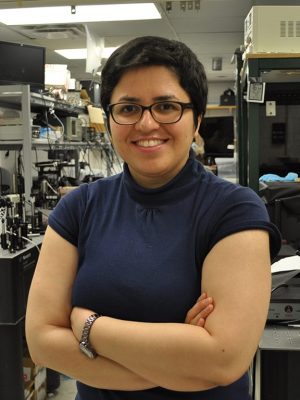
Nooshin Mohammadi Estakhri
University of Michigan – Ann Arbor
PhD Candidate
Nooshin M. Estakhri is currently a PhD candidate at the University of Michigan, Electrical Engineering and Computer Science department. She works under the supervision of Prof. Theodore B. Norris at the Gérard Mourou Center for Ultrafast Optical Science (CUOS) and Optics and Photonics Laboratory. She received her M.Sc. and B.Sc. degrees in Electrical Engineering – Fields and Waves, both from the University of Tehran, Iran, both summa cum laude. Her work has been recognized by several prestigious awards, travel grants, and scientific honors including the Helen Wu Research Award in 2019 and the Richard and Eleanor Towner Prize for outstanding graduate instructors, honorable mention. She has been the recipient of the 2019 Research Excellence Award from MKS Instruments and the Rackham Travel Grant in 2019. Nooshin has been chosen as the featured graduate student by Michigan College of Engineering in 2015, received the Michigan EECS departmental fellowship in 2013, and Silver Medal in the 2009 Iran’s nationwide scientific Olympiad among all electrical engineering students. She has also been selected and invited to the EECS Rising Stars 2019 hosted by the University of Illinois at Urbana-Champaign.
Research Abstract:
Designing and Controlling Quantum Interference with Artificial Materials:
My primary fields of research are in the areas of experimental and theoretical quantum optics, artificial materials design and analysis, and experimental optics of scattering through random media. I study fundamental properties of quantum light-matter interactions and explore methods of controlling quantum interference phenomena by incorporating designer nano-photonic structures as well as random media. For this purpose, generic lossy asymmetric and unbalanced 2×2 networks are studied. A general design guideline is proposed for realizing maximum programmability while maintaining a minimum baseline count for the nonclassical multiphoton interference effect. As a suitable and novel physical platform, metasurfaces, which are two-dimensional artificial structures, are then studied to implement 2×2 networks and achieve quantum coalescence and anti-coalescence effects of two-photon states.